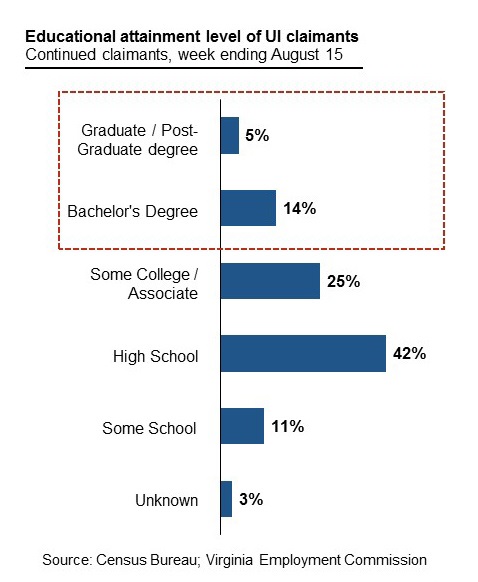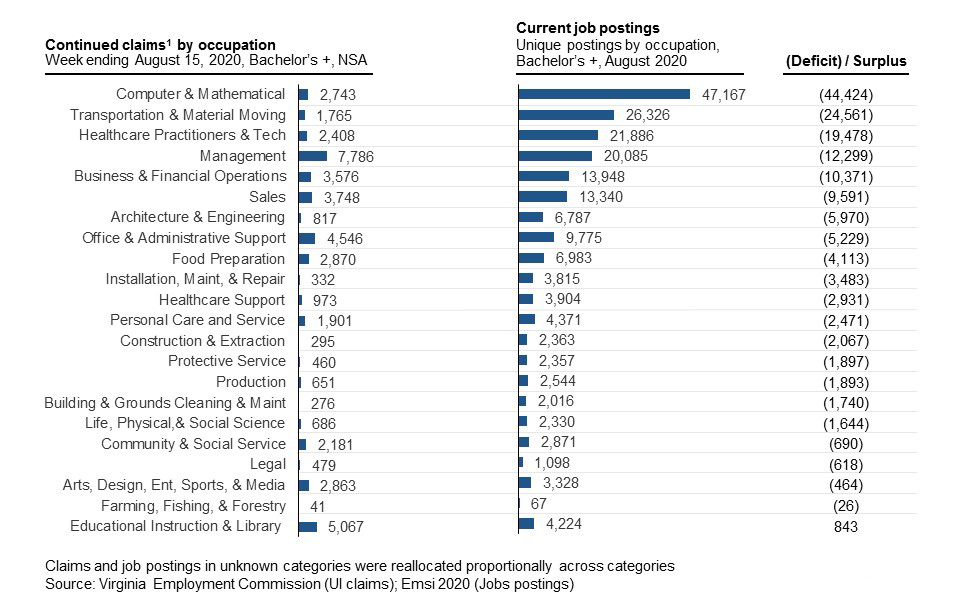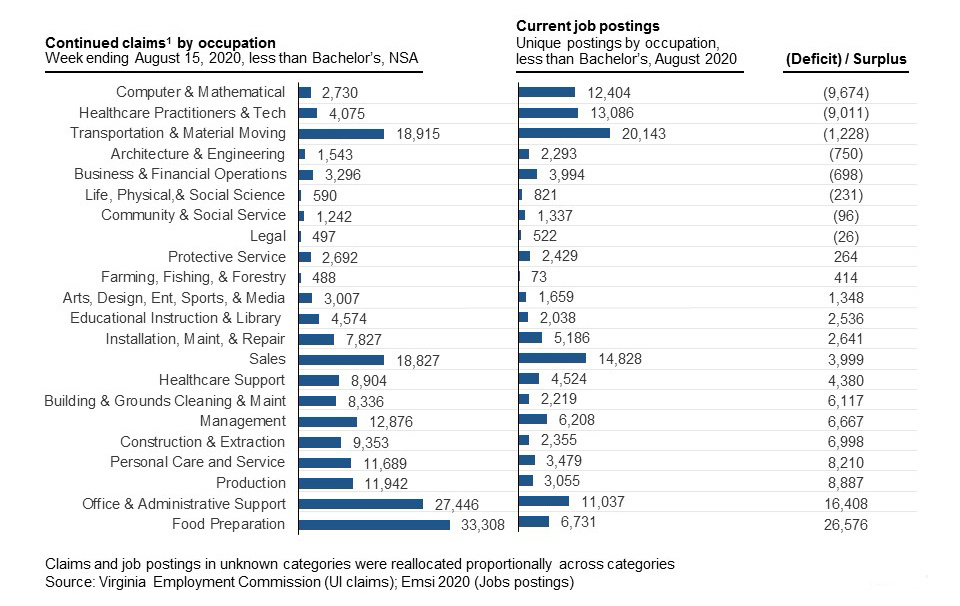By Pam Harder
Managing Director, Strategic Talent Initiatives
Virginia Economic Development Partnership
The Virginia Plan for Higher Education established a goal of becoming the best state for education in America by 2030. An educated population and well-trained workforce increase economic competitiveness and improve the lives of individuals. In order to achieve this goal, Virginia must invest in education across the entire spectrum -- industry certifications, state licensures, apprenticeships and certificates, as well as traditional degree programs. Already Virginia is starting from a strong position: 57% of Virginia’s working-age population (ages 25-64) has earned a postsecondary degree or credential, which is already significantly above the national average.
However when we look deeper, we see some of the same inequities in Virginia that plague our higher education system nationally. Each year, across Virginia’s roughly 85,000 high school graduates, 71% of them enroll in a college or training program within 16 months of graduation. However, that participation rate is only 56% for economically disadvantaged high school students.1 By looking at FAFSA completions as an early indicator this fall during the COVID-19 crisis, there is reason to believe that percentage will be even lower going forward.2
The COVID-19 crisis is shining a flashlight on educational disparities -- and making it all the more urgent for Virginia to invest heavily in a spectrum of education initiatives. At the Virginia Economic Development Partnership (VEDP), we’ve been tracking a number of economic indicators tied to Virginia’s COVID-19 recovery. In partnership with the Virginia Employment Commission, which administers the Commonwealth’s unemployment benefits, we have gleaned some compelling insights into unemployed Virginians. As per the Chart 1 below, you can see that only 19% of Virginia’s unemployment insurance (UI) claimants hold a bachelor’s degree or higher (41% of Virginia's working population have a Bachelor’s degree or above).
1 Defined by the Virginia Department of Education as students eligible for free or reduced lunch, or Medicaid or receiving TANF.
2 As of February 26, 2021, FAFSA completions in Virginia are down 9.7% from the previous year. Completions at Title I Schools are down 34.3%.

In the chart below, we’ve shown a breakdown of Virginia’s statewide continued unemployment claims by occupation. On the right-hand side, we’ve leveraged Emsi job posting data to glean insight into how many unique job postings are currently active within that same occupation. Chart 2 represents only the subset of unemployed persons who have a bachelor’s degree or above, and only represents job postings that reference a bachelor’s degree. Chart 3 is the same analysis, but for only those without a bachelor’s degree. What you observe is that unemployed individuals with bachelor’s degrees are significantly more likely already to be in an in-demand occupation -- where jobs exist, being actively hired for and demanding their skillset. In other words, even though these workers have lost their jobs, employers are available to hire them. Unemployed individuals without a bachelor’s degree are much less likely to have the skills and experiences needed to get re-employed -- and thus would benefit from reskilling, retraining or additional education.
Chart 2: Who’s Looking vs. Who’s Hiring in Virginia (Bachelor’s Degree or Higher)

Chart 3: Who’s Looking vs. Who’s Hiring in Virginia (no Bachelor’s Degree)

In order to ensure an inclusive, resilient, COVID economic recovery and continued growth across Virginia, now more than ever we need to invest heavily in helping those without four-year-degrees find affordable and accessible pathways to good jobs.
The General Assembly’s budget coming out of the 2021 Session includes funding for a new Office of Education and Labor Market Alignment at VEDP to support greater partnerships with higher education regarding labor market demand. This aligns with a recent SCHEV report related to this topic. The budget also includes funding for a new statewide college access program, Guidance to Postsecondary Success (GPS). This program will develop resources and strategies to improve FAFSA completion rates and generally help prospective students navigate the college application process.
The General Assembly also created and funded the Governor’s proposed G3 (Get a Skill, Get a Job, Give Back) Grant Program, making community college more affordable for low- to middle-income families seeking employment in high-demand sectors such as technology, skilled trades, healthcare, early childhood education and public safety. G3 will help get Virginians back to work faster and in high-demand fields. Now more than ever, we need to invest in affordable, accessible pathways for Virginians to earn credentials and skills in high-demand sectors.
VEDP also has collaborated with VCCS and other higher education partners to launch the Virginia Talent Accelerator Program (modeled largely on the acclaimed Georgia Quick Start and Louisiana FastStart programs), which will provide world-class, turnkey, customized workforce recruitment and training solutions as a service-based incentive for competitive, traded-sector economic development projects that offer quality jobs. We know that education and training investments are the key not only to an inclusive and resilient COVID economic recovery in Virginia in the near-term, but also the key to achieving our longer-term goal of becoming the best educated state in America. Our people are our engine of growth that will enable our workers of all backgrounds and our employers of all shapes and sizes to continue to thrive.
Welcome to Insights, SCHEV's platform to interpret and communicate data and policy with the overall goal of informing policy-making, engaging institutions and drawing attention to these resources. Centered around SCHEV's nationally leading data collection, each Insight will visualize complex ideas and help inform funding and policy decisions.
